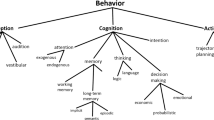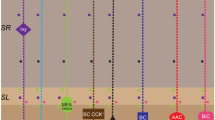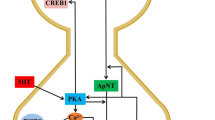Abstract
Review of our own experimental studies of the cellular mechanisms of learning in the nervous systems of gastropod mollusks, along with published results, allows identification of a number of the principles of operation of nervous systems, which are important for descriptions of learning and memory processes: 1) the main plastic changes on learning occur at the level of interneurons; 2) learning results in selective alteration of the efficiency of particular synaptic inputs of command neurons; 3) reinforcement is not linked with neuron activity in the receptor-sensory neuron-interneuron-motoneuron-effector reflex arc, but is mediated by neurons which modulate this circuit, this involving a single neuron in some simple cases; 4) modulator neuron activity is required for the acquisition of plastic modifications to defensive behavior (including associative modifications) but is not necessary for the reproduction of acquired responses to a conditioned stimulus. At the same time, modulator neurons (comprising the reinforcement neuron system) are required for reproduction of contextual associative responses; and 5) changes resulting from learning occur at at least two independent loci in the nervous system.
Similar content being viewed by others
References
P. K. Anokhin, Biology and Neurophysiology of the Conditioned Reflex [in Russian], Meditsina, Moscow (1968).
É. A. Asratyan, Characteristics of Higher Nervous Activity [in Russian], Academy of Sciences of the Armenian SSR Press, Erevan (1977).
P. M. Balaban, “Habituation and sensitization in command neurons during acquisition of a defensive reaction in the common snail,” Zh. Vyssh. Nerv. Deyat., 28, 356–363 (1978).
P. M. Balaban and I. S. Zakharov, Learning and Development: A Common Basis for Two Phenomena [in Russian], Nauka, Moscow (1992).
E. G. Litvinov, O. A. Maksimova, P. M. Balaban, and B. P. Masinovskii, “A conditioned defensive reaction in the common snail,” Zh. Vyssh. Nerv. Deyat., 26, No. 1, 203–206 (1976).
O. A. Maksimova and P. M. Balaban, Neuronal Mechanisms of Behavioral Plasticity [in Russian], Nauka, Moscow (1983).
I. P. Pavlov, Twenty Years of Experience in the Objective Study of Higher Nervous Activity in Animals [in Russian], State Press, Moscow, Petrograd (1923).
E. N. Sokolov, “The conceptual reflex arc”, in: Questions in Cybernetics: Neurocybernetic Analysis of the Mechanisms of Behavior [in Russian], L. A. Sokolov and L. A. Shmelev (eds.), “Cybernetics” Scientific Council of the Academy of Sciences of the USSR, Moscow (1985), pp. 5–28.
P. M. Balaban, “A system of command neurons in snail’s escape behavior,” Acta Neurobiol. Exp. (Warsaw), 39, 97–107 (1979).
P. M. Balaban, “Behavioral neurobiology of learning in terrestrial snails,” Progr. Neurobiol., 41, 1–19 (1993).
P. M. Balaban, “Cellular mechanisms of behavioral plasticity in terrestrial snail,” Neurosci. Biobehav. Rev., 26, No. 5, 597–630 (2002).
P. M. Balaban and N. Bravarenko, “Long-term sensitization and environmental conditioning in terrestrial snails,” Exptl. Brain Res., 96, 487–493 (1993).
P. M. Balaban, N. I. Bravarenko, O. A. Maksimova, E. Nikitin, V. N. Ierusalimsky, and I. S. Zakharov, “A single serotonergic modulatory cell can mediate reinforcement in the withdrawal network of the terrestrial snail,” Neurobiol. Learn. Mem., 75, 30–50 (2001).
P. M. Balaban and R. Chase, “Selfstimulation in snails,” Neurosci. Res. Commun., 4, 139–146 (1989).
P. M. Balaban and O. A. Maksimova, “Positive and negative brain zones in the snail,” Eur. J. Neurosci., 5, 768–774 (1993).
P. M. Balaban, T. A. Korshunova, and N. O. Bravarenko, “Postsynaptic calcium contributes to reinforcement in a three-neuron network exhibiting associative plasticity,” Eur. J. Neurosci., 19, No. 2, 227–233 (2004).
P. M. Balaban, A. Vehovsky, O. A. Maximova, and I. S. Zakharov, “Effect of 5,7-DHT on the food-aversive conditioning in the snail Helix lucorum L.,” Brain Res., 404, No. 2, 201–210 (1987).
W. J. Davis and R. Jillette, “Neural correlates of behavioral plasticity in command neurons of Pleurobranchaea,” Science, 199, 801–804 (1978).
D. A. Frank and M. E. Greenberg, “CREB: a mediator of long-term memory from molluscs to mammals,” Cell, 79, No. 1, 5–8 (1994).
D. O. Hebb, The Organization of Behavior: A Neurophysiological Theory, J. Wiley and Sons, New York (1949).
C. L. Hull, Principles of Behavior, Appleton, New York (1943).
J. L. Mpitsos and D. S. Collins, “Learning: Rapid aversive conditioning in the gastropod mollusk Pleurobranchaea,” Science, 188, No. 4188, 954–957 (1975).
C. Sahley, J. W. Rudy, and A. Gelperin, “An analysis of associative learning in a terrestrial mollusc,” J. Comp. Physiol., 144, No. 1, 1–8 (1981).
K. Si, S. Linquist, and E. R. Kandel, “A neuronal isoform of the Aplysia CPEB has prion-like properties,” Cell, 115, No. 7, 879–891 (2003).
B. F. Skinner, The Behavior of Organisms; an Experimental Analysis, Appleton, New York (1938).
E. L. Thorndike, The Elements of Psychology, Seiler, New York (1905).
E. L. Walker, “Reinforcement — ‘The One Ring,’” in: Reinforcement and Behavior, J. T. Tapp (ed.), Academic Press, New York (1969), pp. 47–62.
E. T. Walters, t. J. Carew, and E. R. Kandel, “Classical conditioning in Aplysia californica,” Proc. Natl. Acad. Sci. USA, 76, 6675–6679 (1979).
I. S. Zakharov, V. N. Ierusalimsky, and P. M. Balaban, “Pedal serotonergic neurons modulate the synaptic input of withdrawal interneurons in Helix,” Invertebr. Neurosci., 1, 41–51 (1995).
Author information
Authors and Affiliations
Corresponding author
Additional information
__________
Translated from Rossiiskii Fiziologicheskii Zhurnal imeni I. M. Sechenova, Vol. 93, No. 5, pp. 521–530, May, 2007.
Rights and permissions
About this article
Cite this article
Balaban, P.M. Cellular mechanisms of behavioral plasticity in simple nervous systems. Neurosci Behav Physi 38, 453–459 (2008). https://doi.org/10.1007/s11055-008-9002-9
Received:
Published:
Issue Date:
DOI: https://doi.org/10.1007/s11055-008-9002-9




